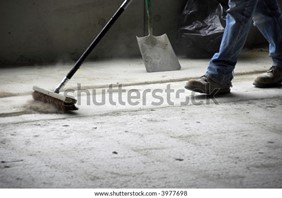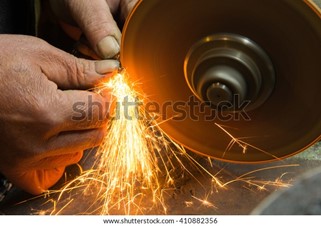PPE: Standard precautions
Instructions:
- Refer to the manufacturer instructions.
- Ensure that the power is disconnected/ battery is disconnected.
- Loosen the bolt using the supplied tool (or a suitable tool as described in the instructions).
- Replace the blade with the equivalent part. (Never use a blade which is not designed for the make and model of the saw that you are working with.)
- Secure the blade according to the manufacturer instructions but taking care not to overtighten.
Take the opportunity to check the power cord, plug, battery terminals etc. at the same time.
Ensure that you replace all guides and covers.
Special notes/precautions/WHS: This information is general and must be read in conjunction with the manufacturer instructions.
The following video demonstrates how to change a circular saw blade. It also discusses how to tell whether a blade needs changing.
PPE: Standard precautions
Instructions:
- Refer to manufacturer instructions.
- Ensure power is disconnected/ battery is disconnected.
- Loosen bolts using supplied tool (or suitable tool).
- Replace blade.
- Adjust blade for depth and to ensure that it is even.
- Secures blade according to manufacturer instructions.
- Does not overtighten.
- Check the power cord, plug, casing etc at same time.
- Replace all guides and covers.
Special notes/precautions/WHS: This information is general and must be read in conjunction with the manufacturer instructions.
PPE: Standard precautions
Instructions:
- Refer to manufacturer instructions.
- Ensure power is disconnected/ battery is disconnected.
- Loosen bolt using supplied tool (or suitable tool),
- Replace bit (adjusting so it sits a few mm about the bottom of the collar), do not overtighten.
- Check power cord, plug, casing etc at same time. Replaces all guides and covers.
Special notes/precautions/WHS: This information is general and must be read in conjunction with the manufacturer instructions.
The following video demonstrates how to safely and effectively change a router bit.
PPE: Standard precautions
Instructions:
- Refer to manufacturer instructions.
- Ensure power is disconnected/ battery is disconnected,
- Release spindle using button (or suitable tool),
- Replace disk,
- Replace spindle,
- Secure disk according to manufacturer instructions being careful not to overtighten.
- Check power cord, plug, casing etc at same time.
- Replace all guides and covers.
Special notes/precautions/WHS: This information is general and must be read in conjunction with the manufacturer instructions.
The following video demonstrates how to safely and effectively change the disk on a grinder.
PPE: Standard precautions, eye protection, hearing protection
Instructions:
- Choose a hard wearing, moisture free work surface.
- Identify any chips in the cutting edge.
- Using a grinding wheel, hold the tool at a right angle to create a square blunt end to the tool. Or alternatively a coarse whetstone to remove any damaged or chipped ends of the blade.
- For damaged blades, an 80-grit granite block is recommended to begin with and working your way through the grits on the granite with approximately 20-30 strokes as you work through them. The blade may become smaller as you are removing the damaged parts to reveal a clean sharp end.
- Hone the blade using a honing stone in back-and-forth motions leaving a clean surface finish. 8
PPE: Standard precautions, eye protection, hearing protection
Instructions:
- Thoroughly wet the whetstone with water
- Ensure the whetstone is positioned on a flat even surface
- Align the blade with a gauge to secure. Hold the chisel in your dominant hand and hold the angle with the other.
- Apply some pressure to the chisel and grind away from your body and apply more pressure when bringing the blade back.
- Cease the process once the blade is a straight rectangular edge and there are no further chips in the blade
- Replace the whetstone with a honing stone ensuring it is clean, wet and flat.
- At this stage, apply a small amount of pressure to the blade on the softer stone and slightly reduce the angle. With an 8000-grit stone, this should be achievable with five strokes forward and five back.6
This video demonstrates techniques for sharpening a chisel.

Brooms are the basic tools used in cleaning up and are available in a variety of sizes for specific uses and may have heads containing bristles of straw, polypropylene or animal hair. Stiff-bristle brooms such as the yard broom and straw broom may be used on rough surfaces, and soft-bristle brooms may be used on smooth surfaces, such as lined or coated floors. Brooms may also be used to provide a textured non-slip finish to wet concrete. Broom handles are made from seasoned hardwoods which are straight-grained, strong and flexible.
Brooms form an essential part of the carpenter’s equipment kit, as they may be required to clean up a work area before carrying out a task, or to clean up after work has been carried out. It is each tradesperson’s responsibility to clean up his or her own mess and to leave a clean, dust-free and safe work surface in line with WHS Acts and Regulations.
Keep in mind that you must:
- follow the site’s procedures for safe environmental clean up
- follow the site’s procedure to ensure that the clean up process does not put yourself or others at risk of injury or harm
- always consider the principles of reduce, reuse and recycle
- avoid contaminating stormwater when cleaning tools, equipment, materials and the work area
- follow manufacturer instructions for cleaning and servicing tools and equipment
- check tools and equipment for defects and/or damage before storing them
- report any faults in tools and equipment and immediately remove them from service
- check and clean PPE
- clean and dry all tools and equipment before storing them
- store tools and equipment securely and according to manufacturer specifications and instructions
- store tools and equipment according to workplace specifications.

